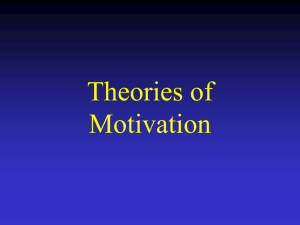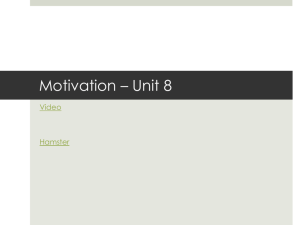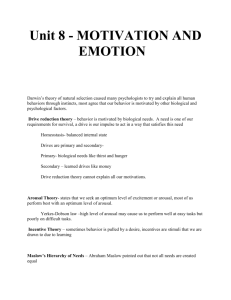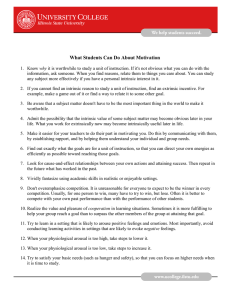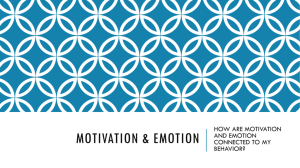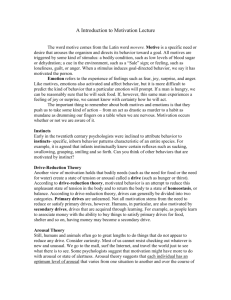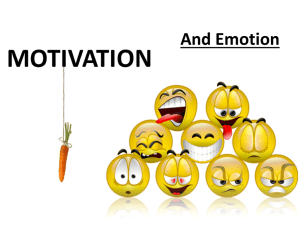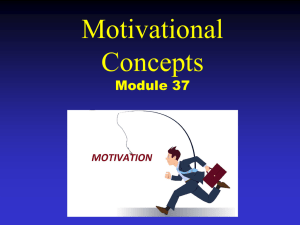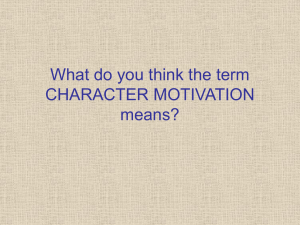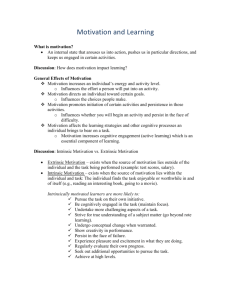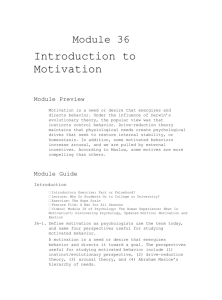Motivation pp
advertisement
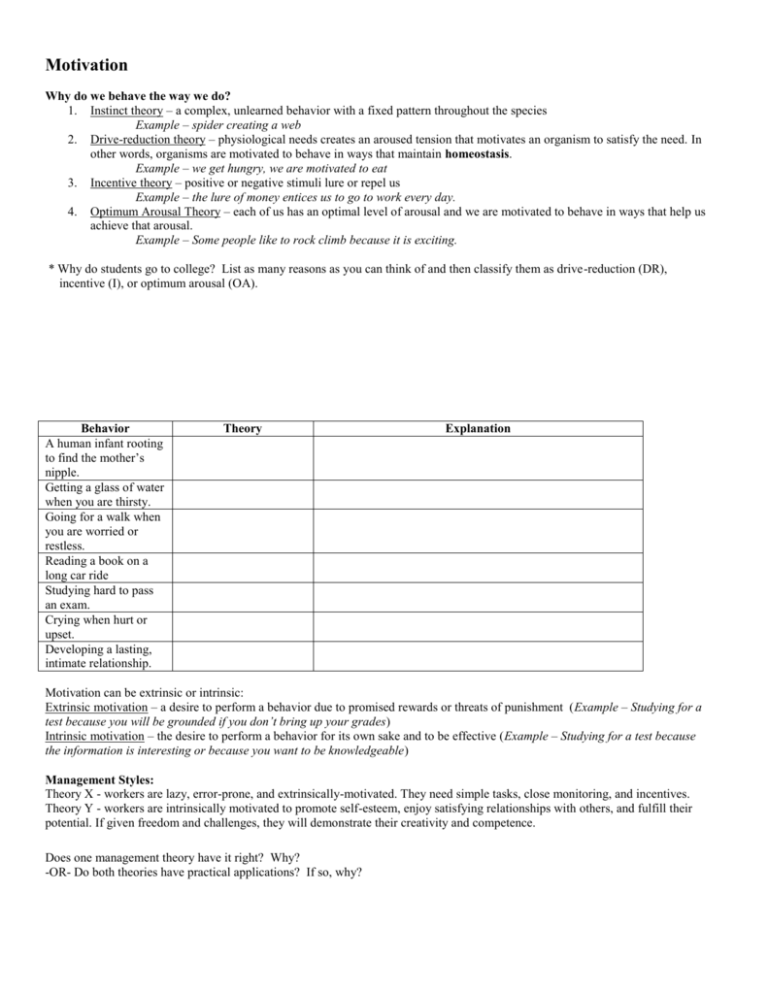
Motivation Why do we behave the way we do? 1. Instinct theory – a complex, unlearned behavior with a fixed pattern throughout the species Example – spider creating a web 2. Drive-reduction theory – physiological needs creates an aroused tension that motivates an organism to satisfy the need. In other words, organisms are motivated to behave in ways that maintain homeostasis. Example – we get hungry, we are motivated to eat 3. Incentive theory – positive or negative stimuli lure or repel us Example – the lure of money entices us to go to work every day. 4. Optimum Arousal Theory – each of us has an optimal level of arousal and we are motivated to behave in ways that help us achieve that arousal. Example – Some people like to rock climb because it is exciting. * Why do students go to college? List as many reasons as you can think of and then classify them as drive-reduction (DR), incentive (I), or optimum arousal (OA). Behavior A human infant rooting to find the mother’s nipple. Getting a glass of water when you are thirsty. Going for a walk when you are worried or restless. Reading a book on a long car ride Studying hard to pass an exam. Crying when hurt or upset. Developing a lasting, intimate relationship. Theory Explanation Motivation can be extrinsic or intrinsic: Extrinsic motivation – a desire to perform a behavior due to promised rewards or threats of punishment (Example – Studying for a test because you will be grounded if you don’t bring up your grades) Intrinsic motivation – the desire to perform a behavior for its own sake and to be effective (Example – Studying for a test because the information is interesting or because you want to be knowledgeable) Management Styles: Theory X - workers are lazy, error-prone, and extrinsically-motivated. They need simple tasks, close monitoring, and incentives. Theory Y - workers are intrinsically motivated to promote self-esteem, enjoy satisfying relationships with others, and fulfill their potential. If given freedom and challenges, they will demonstrate their creativity and competence. Does one management theory have it right? Why? -OR- Do both theories have practical applications? If so, why?
